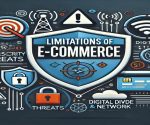When you define a brand, you talk about the personality of a business. A brand is not only its name or logo. It includes everything that helps people know, trust, and remember a product, person, or company. In simple words, a brand is how others see and feel about something. From Tata to Amul to your local bakery, every business has a brand. It is how people talk about you when you’re not around. So, what does it mean to define a brand? It means identifying the key features, values, and feelings that people connect with a product or service. For example, when we say “Apple,” we think of high-tech, premium, and user-friendly. This connection is branding at work. In today’s world, where choices are plenty, branding helps a business stand out. People often buy based on feelings, not just price or features.
What Is a Brand and Why Does It Matter?
Every time you buy a product or service, you are making a choice influenced by branding. When we define a brand in business, we are explaining how a product makes a lasting impression on someone. A brand includes the name, look, tone, and the promise it gives to customers. It shapes how customers feel and think about the company or product.
What Makes Branding So Important?
A brand makes your business more than just a product. It gives identity and builds trust. Think about this — when you hear “Amul,” you immediately think of dairy, freshness, and trust. That’s the power of branding. It helps you:
- Be known in a crowded market
- Build loyalty and repeat customers
- Charge better prices
- Create emotional connection
Branding builds a strong foundation that keeps a business steady during ups and downs. A good brand gives people a reason to pick your product again and again. In fact, customers are more likely to try a new product from a brand they already trust. That’s why even startups in India are investing in branding from day one.
To summarize, defining a brand is the first and most important step in building a successful business. Without it, you’re just one more option among many.

Main Elements That Define a Brand
When you define a brand, it’s not just one thing. A brand is made of several parts that work together. Each part plays a role in how people see and remember your business.
The Brand Name
This is the first thing people hear. It should be short, easy to say, and unique. For example, “Zomato” is catchy and easy to remember. In India, names like Dabur, Bajaj, and Paytm have high recall value.
The Logo and Symbol
Logos are symbols that speak louder than words. A tick mark reminds us of Nike. A red circle takes us to Airtel. A logo is often the first visual element that people notice. It should be simple and meaningful.
The Tagline
This short phrase explains what your brand stands for. LIC’s “Zindagi ke saath bhi, zindagi ke baad bhi” is a classic example. Taglines can build instant connection and communicate your mission.
Colors and Fonts
Colors make people feel something. Red can mean energy; blue can show trust. Brands like SBI use blue for that reason. Fonts must also match your brand’s tone — playful, serious, or modern.
Brand Voice and Personality
Do you speak like a friend or an expert? Zomato uses fun, quirky language. Tata is more formal. Your tone tells your customers what to expect from you.
The Promise
Your brand promise is the value you give to every customer. Domino’s promises delivery in 30 minutes. This creates trust and sets a clear expectation.
When these elements come together, they create a strong brand identity. Each one supports the others, and together they make your brand memorable.
Branding in Marketing: How a Brand Adds Value
Branding and marketing go hand in hand. A brand is what you are, and marketing is how you tell the world about it. When you define a brand in marketing, you’re talking about how it adds strength to your campaigns, builds loyalty, and supports your business growth.
Why Strong Brands Make Marketing Easier
Marketing is more effective when your brand is clear and consistent. It helps your audience recognize your ads, trust your message, and take action faster.
- Higher Trust: People buy from brands they know.
- Easy Recall: A known logo or color helps people remember your brand.
- Better ROI: Marketing gives better results when tied to a strong brand.
For example, when Amul releases a new butter ad, it needs no introduction. People already love and trust the brand. That trust is the result of years of branding work.
The Role of Brand in Digital Marketing
In digital marketing, your brand must shine online. Your website, social media, and even email tone should reflect your brand. People expect the same experience everywhere. Consistency builds confidence.
Using keywords like “define brand in marketing” in content also helps Google rank your business higher. A strong brand with SEO boosts online reach and traffic. That’s why branding is not just about looks—it’s a marketing tool.
Steps to Build a Brand from Scratch
Now that you understand the theory, let’s talk about action. Anyone can build a brand if they follow the right steps. Whether you’re a student starting a blog or a small business owner, this process works.
Step 1: Know Your Audience
Your brand must speak to the right people. Ask:
- What do they want?
- What do they care about?
- Where do they shop or spend time online?
If your target is school students, your tone and colors must be fun and bright. If you’re targeting working professionals, be more formal and trustworthy.
Step 2: Choose a Name That Fits
Pick a name that is easy to say and spell. Check if the website and social media handles are available. Names like “Byju’s” and “CRED” are good because they are short and meaningful.
Step 3: Create a Memorable Logo
Use tools like Canva or hire a designer. Your logo should look good in black and white and in color. It must work well on phones and billboards too.
Step 4: Write a Tagline
This is your brand’s elevator pitch. Keep it under 7 words. Make it catchy and clear.
Step 5: Define Your Tone
Decide how your brand will talk. Are you fun, serious, expert, or casual? Write posts and ads using that tone every time.
Step 6: Be Consistent Everywhere
Use your brand name, logo, colors, and tone across:
- Website
- Social media
- Emails
- Packaging
- Business cards
When people see your content, they should know it’s from you without reading the name.
This process takes time but gives long-term results. Once built, your brand becomes your biggest asset.
Types of Brands You Should Know
Brands come in many types. Knowing these helps you understand how different companies position themselves.
Personal Brands
These are based on a person. Think of Virat Kohli, Ranveer Allahbadia (BeerBiceps), or Sandeep Maheshwari. Their face, voice, and values become the brand.
Product Brands
These are focused on one product. For example, “Maggi” is a product brand under Nestle.
Service Brands
These offer services, not physical goods. Ola, Swiggy, and Urban Company are service brands.
Corporate Brands
This includes the entire business identity. For example, Tata Group has many companies but a single strong corporate brand.
Digital Brands
These exist mostly online. Flipkart, Amazon, and BookMyShow are examples.
Regional or Local Brands
These are known in smaller areas. For example, Saravana Stores is famous in Tamil Nadu.
Each type has its own way of connecting with the audience. Some use ads, some use influencers, and others rely on word of mouth.
Branding in the Digital World: The New Rules
In today’s world, branding doesn’t stop at logos or ads. Digital presence shapes how people view your brand. You must be active and consistent online.
Social Media Branding
Pick the platforms where your audience is. For students, it may be Instagram. For professionals, use LinkedIn. Your posts, bio, and images should match your brand tone.
Website Branding
Your website should reflect your brand’s identity. Use your logo, colors, and brand voice. Add testimonials and about pages to build trust.
Email and Content
Write emails in your brand’s voice. Use email signatures with your logo. Your blogs should include voice search terms like:
- “What is branding?”
- “How to define a brand in simple words?”
- “Steps to build a brand in India”
Online Reviews
Encourage happy customers to leave reviews. Reply politely and quickly. Reviews improve both SEO and brand trust.
Digital branding is ongoing. You must monitor, update, and engage regularly.
Define Brand FAQs
1. What does it mean to define a brand?
To define a brand means to explain the unique identity of a business, product, or person. It includes name, logo, tone, values, and the emotional connection it creates with the audience.
2. What are the key elements of a brand?
The main brand elements include the name, logo, tagline, brand voice, color scheme, and brand promise. All these work together to create a brand identity.
3. How does branding help in marketing?
Branding builds recognition and trust. It makes marketing more effective because people are more likely to buy from a known and trusted brand.
4. What is the difference between personal and corporate brands?
A personal brand is based on a person’s image, like a YouTuber or speaker. A corporate brand represents the whole company, like Infosys or Tata.
5. Can students or individuals create a brand?
Yes. Anyone can build a personal brand using social media, blogs, or videos. Consistent voice, helpful content, and clear goals make it possible.


